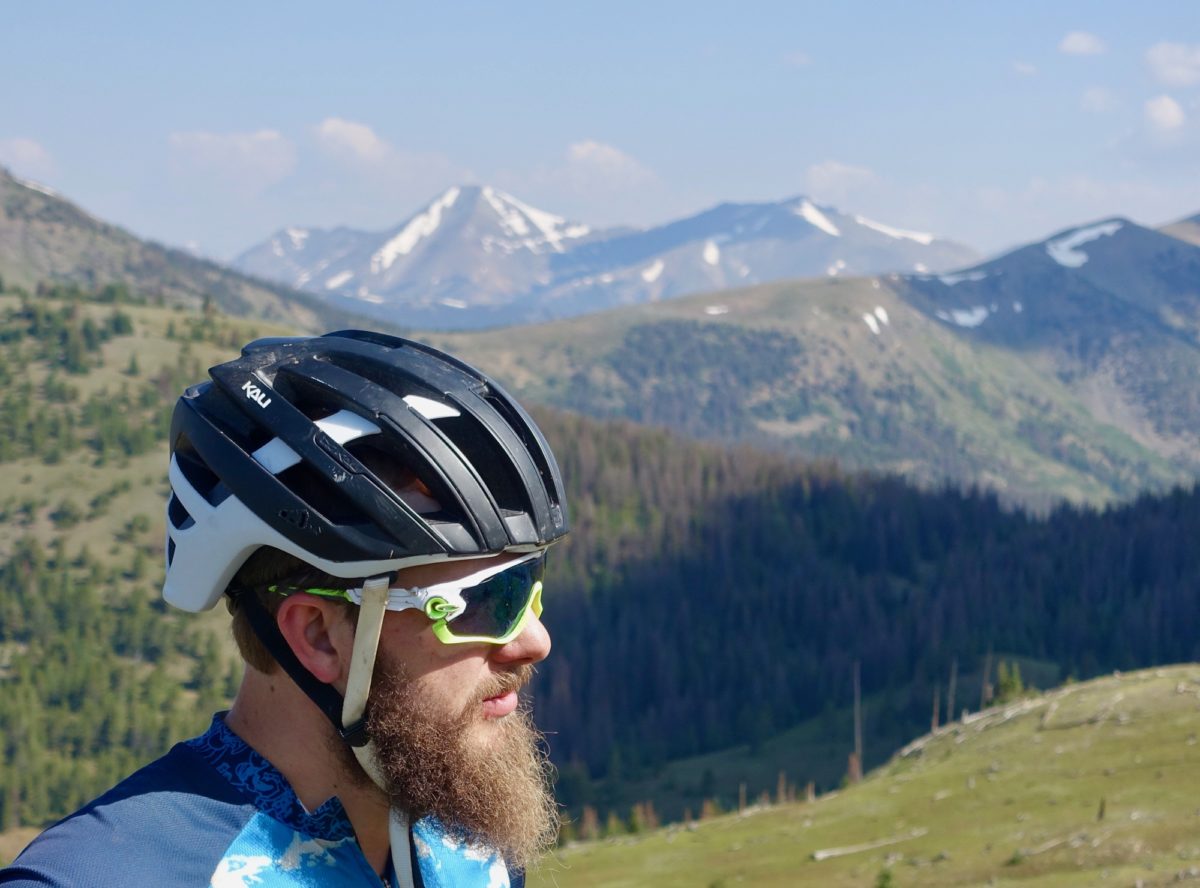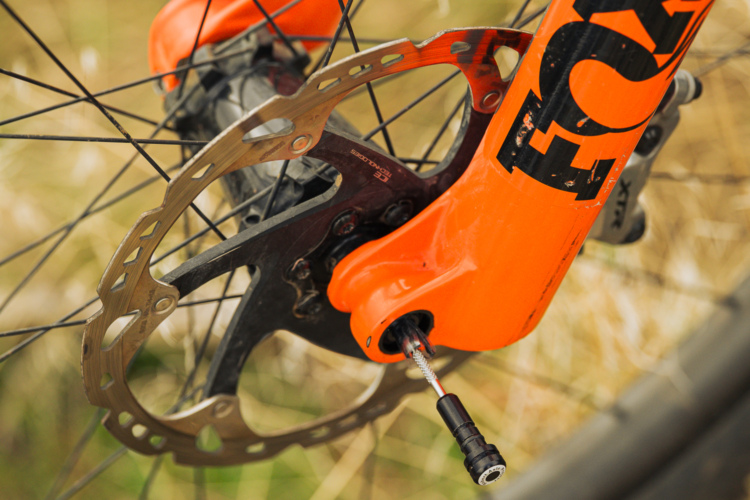
No part of your body is as important as your brain. Not only do our brains make us human, but they give us our distinct personality and uniqueness as individuals. Even non-life threatening brain injuries can forever alter a person’s demeanor or temperament–which is why Kali Protectives continues to push the envelope by developing new head protection technologies. All of their latest advancements are present in their new Interceptor helmet.
Tech

The newest tech advancements introduced in the Interceptor are Kali’s Nano Fusion and Low Density Layer (LDL). In brief, Nano Fusion allows the foam of a helmet to spring back into place after an impact. In most helmets, the foam is forever compressed after an impact–not so with Nano Fusion. Read Jeff’s more detailed explanation here.
[see_also id=”197041″][/see_also]
That said, the Interceptor is still rated as a single impact helmet, although Kali does offer a Lifetime Crash Replacement policy for this helmet–pretty incredible! However, you can’t just keep crashing and getting new helmets–if you destroy your replacement helmet (ie helmet #2), Kali will give you a 25% discount toward your third helmet purchase.

LDL is possibly even more interesting than Nano Fusion. LDL is essentially Kali’s own response to MIPS. According to Kali, “LDL consists of specially designed viscoelastic padding placed throughout the interior of the helmet. [It] reduces rotational impact forces by up to 25% and low-G linear impact forces by up to 30%.” While MIPS claims to reduce the risk of concussions, there is very little verified scientific evidence to back up their claims. Perhaps the same could be said for LDL (above and beyond Kali’s own testing), but the salient point is that more companies are trying to find ways to stave off concussions–which can only a good thing.
[see_also id=”50540″][/see_also]
A stunning example of LDL and Nano Fusion in action is Nicholi Rogatkin’s infamous crash during Red Bull Rampage, 2015, which he walked away from. Rogatkin was wearing a prototype Kali helmet with this technology, which they credit with saving him. Kali has also recreated the crash in a laboratory setting, to study exactly what went right and why it was successful.

LDL technology is implemented using specially designed Armourgel nubs placed throughout the helmet, which you can see in the image below.

Above and beyond the ample protection, the Interceptor provides a variety of features to enhance comfort and wearability of the helmet. It includes what Kali calls “Supervents,” aka massive vents on the front of the helmet for maximum ventilation. The Interceptor features 24 vents in total.

A reliable Boa dial is utilized for fit adjustment, allowing the rider to microadjust to the perfect tension. Finally, the helmet also includes anti-microbial pads, an adjustable visor, and a locking slider system to attach accessories.
[see_also id=”54188″][/see_also]
Claimed weight for the helmet is 390g–a mere 40g more than the lower profile Maya helmet which doesn’t include MIPS or LDL.
Out on the Trail

Until I received the Interceptor, Kali’s Maya helmet was my go-to lid for close to two years. With a mold that comfortably fits my head and a great form factor with enough coverage but not too much heft, the Interceptor had some serious work to do to beat out the Maya.
[see_also id=”181697″][/see_also}
I was attracted to the Interceptor by the promise of new technology for maximum brain protection. Having suffered some serious concussions in the past, I don’t want to take any risks with my most precious of organs. Initially I was on the lookout for a MIPS, but in my estimation LDL has at least as much promise, if not more. Thankfully I still have not crashed on the Interceptor, despite months of use, but I can comment on the rest of the helmet features.

Compared to the Maya, the Interceptor is a touch heftier, but that additional heft offers more back and side protection–a price that many enduro riders think is well-worth paying.
While at first I wasn’t sure if the Interceptor would pair with my favorite glasses–the chunky Oakley Jawbreakers–I found the helmet to offer just enough brow clearance to fit my glasses, and the straps stand far enough away from my face to fit the arms of the glasses beneath.
[see_also id=”191242″][/see_also]
After a handful of rides I found myself very annoyed with the stock visor. Unlike the visor found on the Maya, which stays solidly in place and rarely moves, the visor on the Interceptor felt flimsy and would get knocked out of position in transportation, catching on backpacks, clothing, and the like. I also didn’t find the visor to provide any meaningful sun blockage, so I just decided to pull it off and leave it at home. I haven’t looked back, and I don’t feel like I have any need for a visor on this helmet.

The Supervents have performed admirably so far, with veritable maws of air-gathering goodness successfully keeping my head cool even while grinding up arduous 12-mile climbs. If I have any complaint about the size of the vents, it’s that my forehead has gotten a little sunburnt once or twice–they proved to be that spacious!

Finally, the Boa closure has been solid and dependable throughout the entirety of my test. Compared to Giro’s proprietary ratchet system or the adjustment found on the Maya, the numerous small clicks of the Boa dial allowed me to micro adjust the fit to the perfect tightness–not too loose, not too tight, just right. On the Maya, I found that I’d often want to be about halfway between two adjustment points–with the Boa dial, that’s a non-issue.
If I had to come up with a complaint to levy against the Interceptor above and beyond the futility of the visor, it would be that when the Boa dial is too tight, the wires cut into my head uncomfortably. However, whenever I started to feel that discomfort, I was able to back the dial off a click or two and the pain evaporated.
Finish Line
I thank God that I didn’t have the opportunity to test Kali’s new LDL or Nano Fusion technology, but knowing the effort that Kali continues to invest in protecting riders’ brains helps put my own mind at ease. Traumatic Brain Injury is a path that I have no desire to walk down again, and to that end every stride that we can take, and every dollar that we can spend in prevention, is worth it.
[see_also id=”66674″][/see_also]
All of the other bells and whistles on the Kali Interceptor (aside from the useless visor) pass the test with flying colors. This helmet features ample clearance for glasses, maximum ventilation, great coverage at minimal weight, and some of the best fit adjustment I’ve ever experienced in a mountain bike helmet. As a result, I have no hesitation recommending this lid to any mountain biker. Period.
MSRP: $180
Thanks to Kali for providing the Interceptor Helmet for review.






















1 Comments
Jul 21, 2017